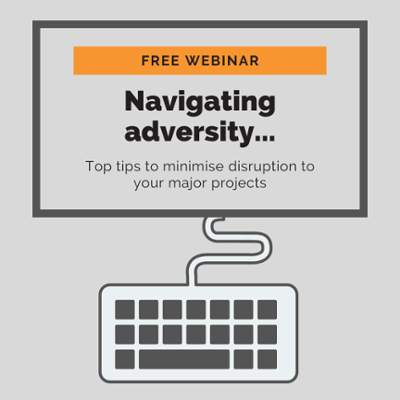Gartner describes operational resilience as:
A set of techniques that allow people, processes and informational systems to adapt to changing patterns. It is the ability to alter operations in the face of changing business conditions.
Operational resilience is now more relevant than ever. All businesses – big and small – are already responding to the changing economic environment and are implementing plans to keep their businesses trading and ensure they can bounce back when the economy picks up again.
Operational resilience doesn’t stop there. Here are a few pointers to help you navigate the months ahead and to plan for the long-term future.
- Skeleton business – keep things running
- If you can help it, you don’t want to down tools altogether. This is costly and the restart will be difficult and slow. We recommend keeping the business running – even if it is not at full capacity. Ensure there is a level of continuity and business as usual. During this period, make sure you are clear about the measures you are taking to ensure everyone, staff and customers, are safe.
- Decision tree – plan for ramp-up
- Customers will return, but we don’t know when and how yet. So when planning to ramp back up, you will need to work through multiple scenarios. Build-in simple decision points and triggers that enable you to plan the next phase and scenarios. Remember, it is a journey.
- Fulfil demand – understand your supply chain
- When orders start streaming in, you will need to make sure you can fulfil these. Map your supply chain and understand who your critical suppliers are. Have early discussions with them to understand their challenges and align your priorities.
- What’s up – keep your people engaged
- People will no doubt be affected with remote working, changing roles, responsibilities and some on furloughed leave. It is essential to keep communicating with your teams to ensure they know what measures you are taking, the forward plan and decision tree and importantly, how it will affect them. It is also an excellent time to upskill and train people so they can hit the ground running.
- Customer at the heart – understand their needs
- Whatever your plans are, it needs to align with customer needs and expectations. We recommend ‘client listening’ to understand what has changed in their behaviour, expectation and spending decisions. This is a good time to map your customer journey and touchpoints ensuring that you provide not only the right products but also wrap-around services and communications to provide a great customer experience.
- Agile – enable quick decision making
- Things are changing at a rapid pace and organisations that will come back strong, are the ones that can make the right decisions quickly, based on accurate information and data. What you need is strong, decisive leadership, a forum for decision making (how, when, who) and accurate and up to date information and reporting to inform decisions.
If you need help with your Operational Resilience, please contact info@ninefeettall.com and we will set up a free consultation with a member of our team.


